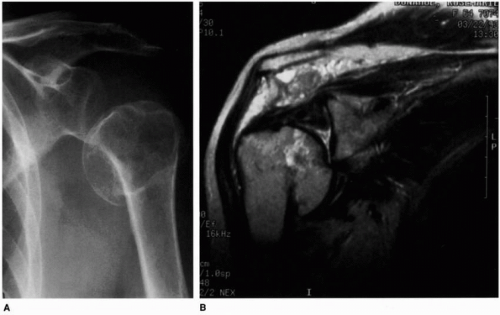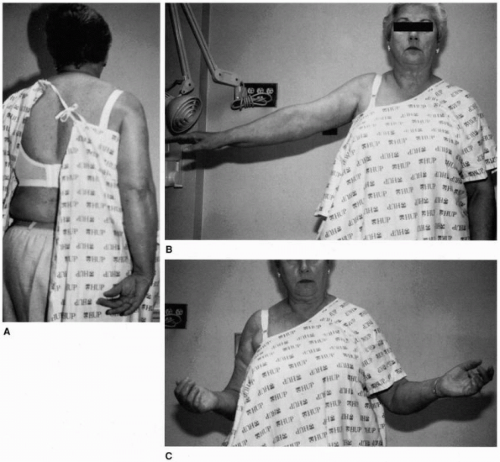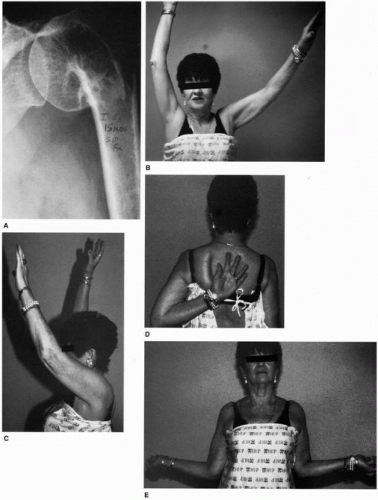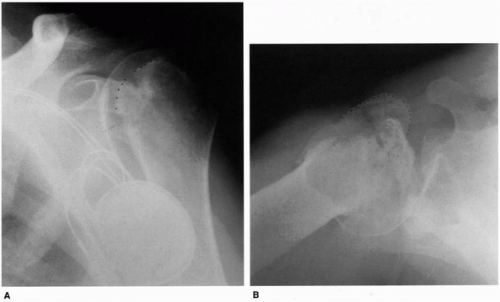Malunions of the Proximal
T. F. Ritzman: Department of Orthopaedic Surgery, Clinic Lerner School of Medicine, Cleveland, Ohio.
J. P. Iannotti: Department of Orthopaedic Surgery, Cleveland Clinic Foundation, Cleveland, Ohio.
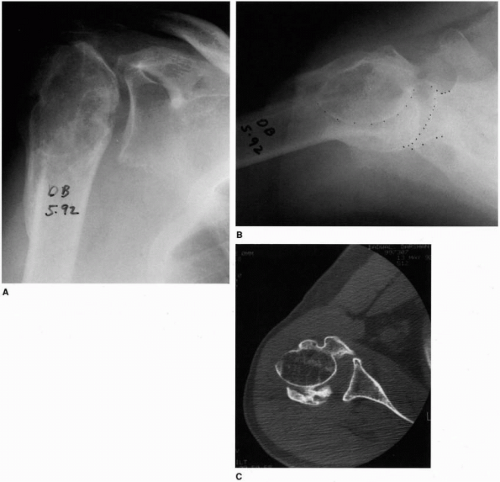 Figure 17-5 A 45-year-old businessman sustained a fall in India that was treated with nonoperative care. He had only mild pain with the activities of daily living and therefore did not consent to surgery. This patient had only 70 degrees of elevation and 0 degrees of external rotation and internal rotation to the buttock. (A) Malunion of a four-part fracture is poorly defined on the anteroposterior view. (B) The axillary view improves the recognition of the displaced humeral head fragment (widely spaced dotted line), and (C) the CT scan best defines the united tuberosities.
Stay updated, free articles. Join our Telegram channel
Full access? Get Clinical Tree
 Get Clinical Tree app for offline access
Get Clinical Tree app for offline access

|
